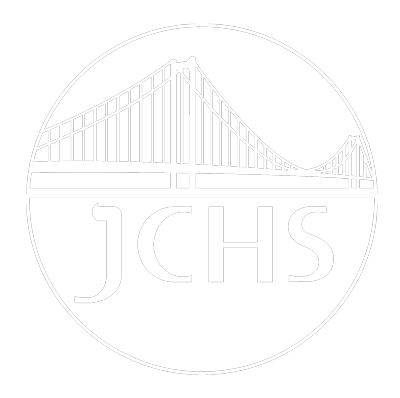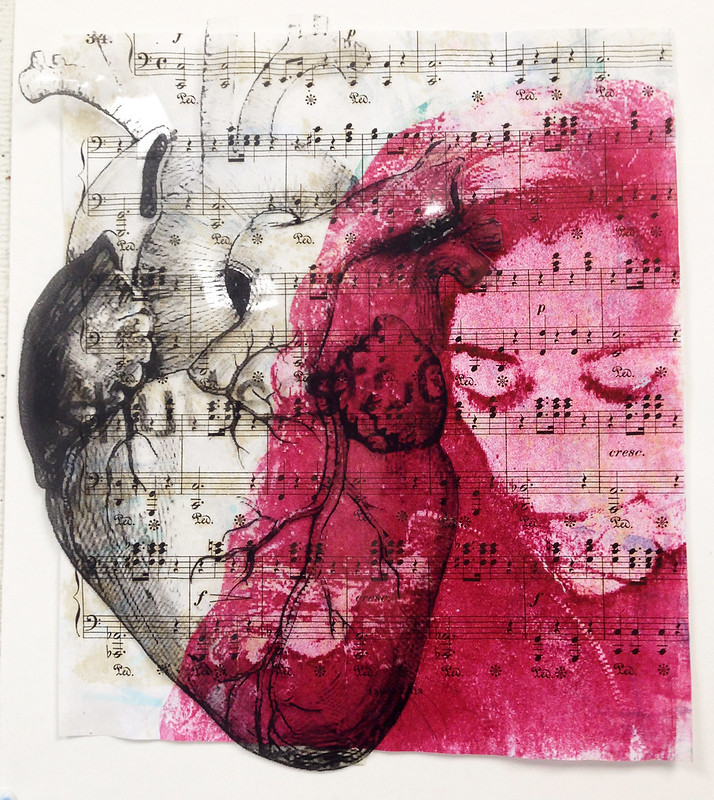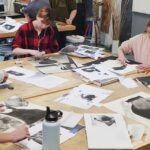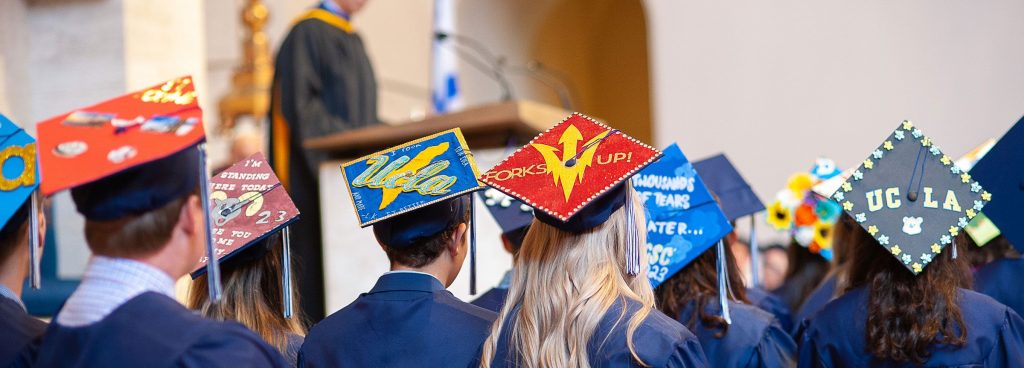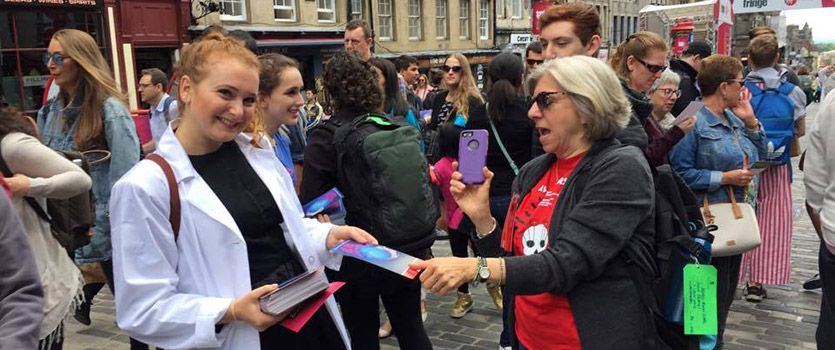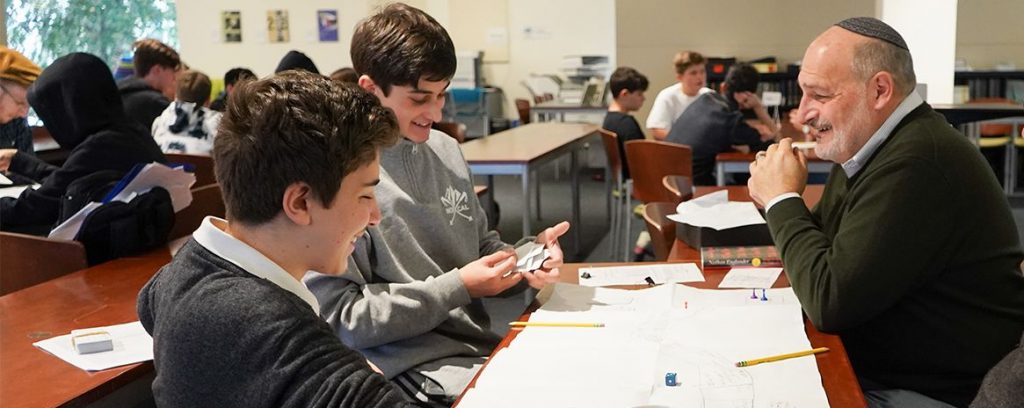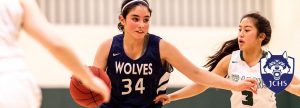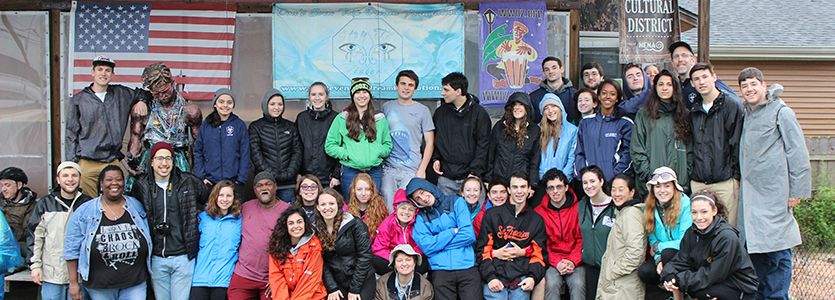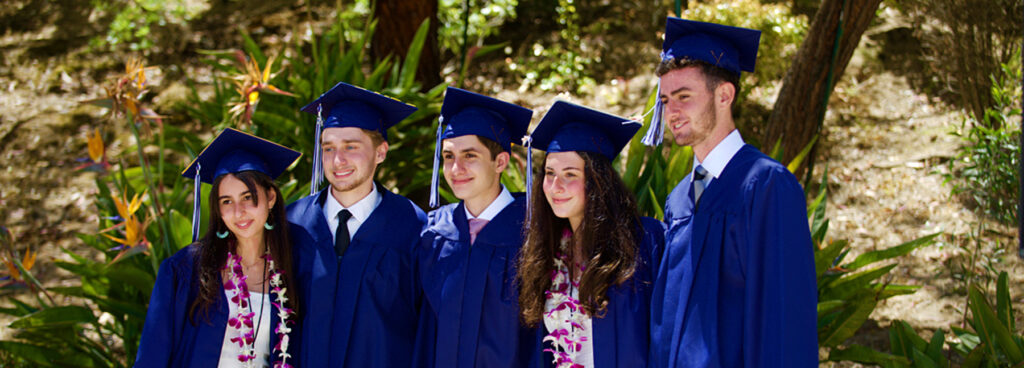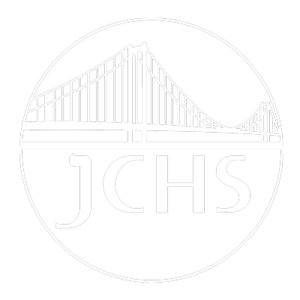Visual & Performing Arts
Our goal is to have students transfer their developing awareness of artistic value and cultural understanding to all areas of their life, learning and community.
The Visual & Performing Arts Department offers every student the opportunity to explore artistic creation in visual, dramatic and musical mediums. Instructors guide students to connect their burgeoning skills with their ideas and personal experiences to begin to develop an artistic aesthetic. Students think critically and analytically regarding artistic choices, motivations and relevant theories throughout the process of creating art and through the completion of the final product. The department emphasizes the importance of studying contemporary and traditional approaches within each medium and its cultural development through history.
Art is incorporated into all aspects of the JCHS experience through collaboration with performing arts, gallery showcases, and site-specific art installations throughout our campus. Our goal is to have students transfer their developing awareness of artistic value and cultural understanding to all areas of their life, learning and community.
The Visual & Performing Arts Department’s mission is to see each student develop the ability to:
- Engage in the artistic process to develop original pieces of art and performance
- Process, analyze, and respond to artistic information using appropriate artistic vocabulary and themes
- Relate and utilize historical and cultural information to contextualize their own work, and make historical and cultural connections to fine art and other academic disciplines
- Analyze and think critically about their own work, the work of their peers, and the artistic works within the community and culture
- Evaluate and offer respectful, constructive feedback regarding their artistic outcomes and those of their peers
- Learn to work independently, as well as in a group
- Develop the problem-solving skills necessary to bring a long-term project to a successful close
LEARN MORE ABOUT DRAMA | VISUAL ARTS | MUSIC
Click on any course name below to learn more.
Visual & Performing Arts Core Courses
Visual & Performing Arts Elective Courses
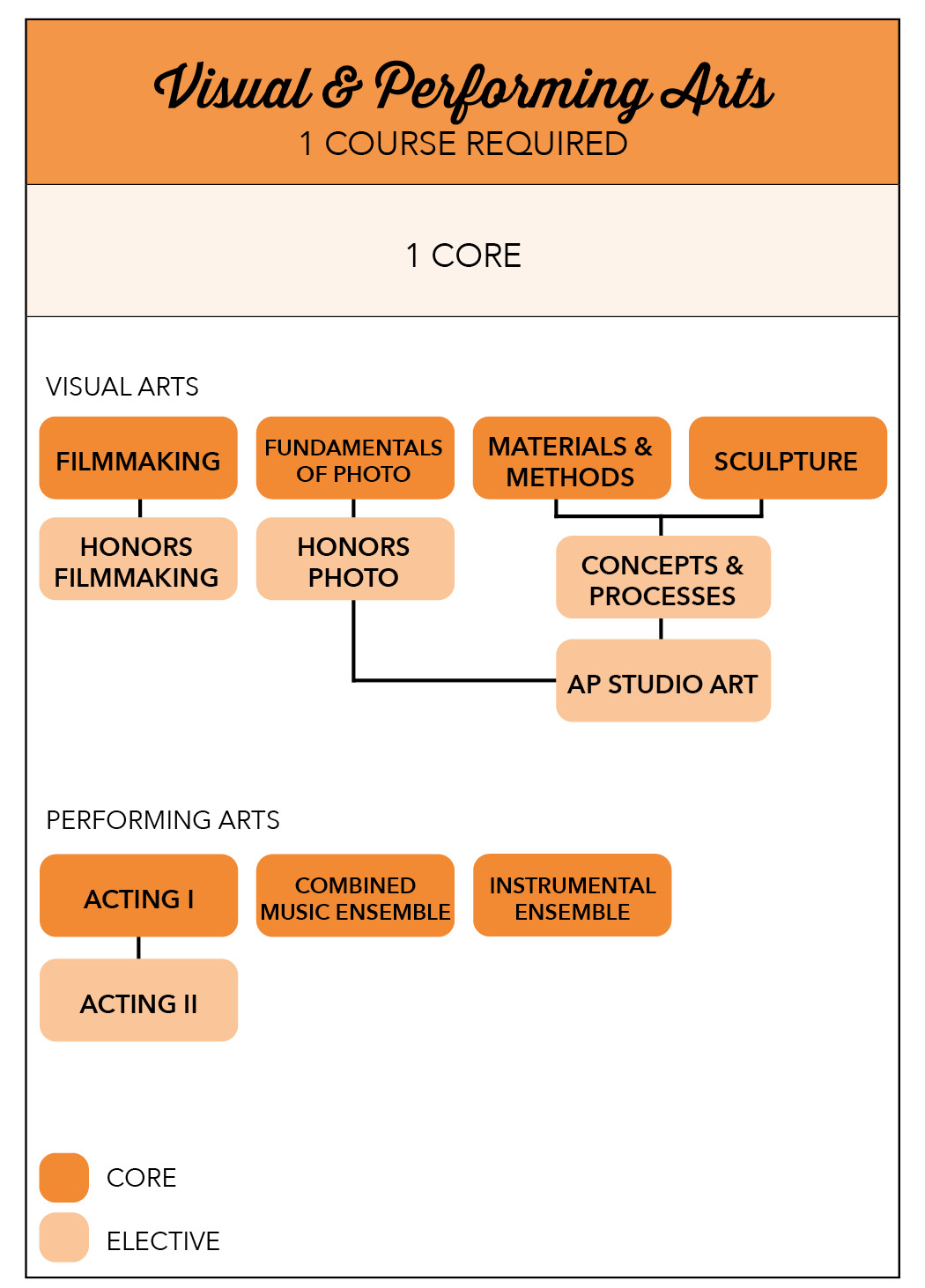
Click here to view the complete Curriculum Map
Visual Art work created by JCHS students
